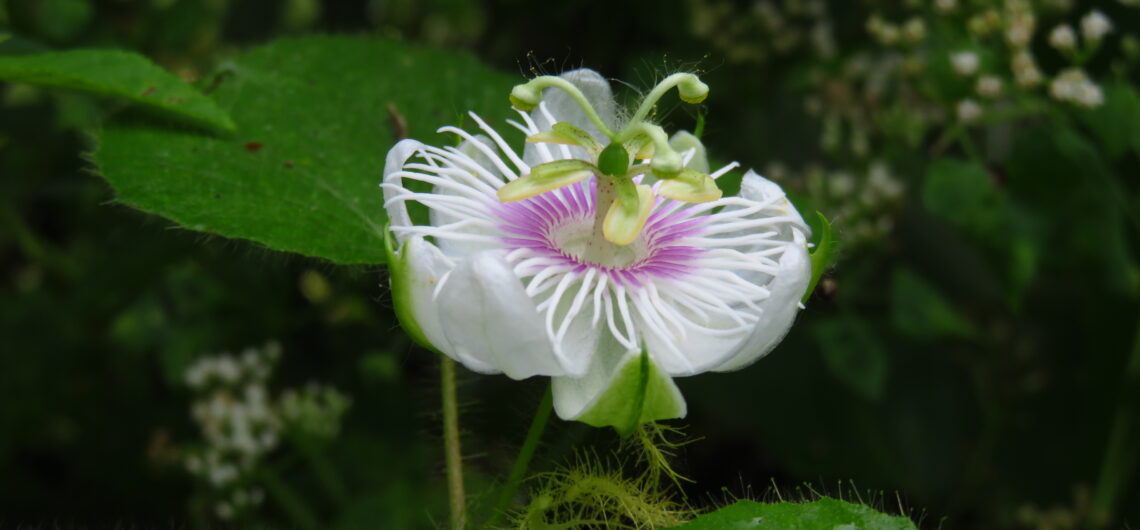Stinking Passion Flower
Passiflora foetida
Passion flowers are some of nature’s most strikingly beautiful flowers, and this one is no exception! This herbaceous vine produces a beautiful white flower with bluish or purplish coronas and that is no doubt very attractive. Get a little closer, however, and you may be turned away by its unpleasant smell when disturbed—in fact, the word foetida means “bad smelling.” Stinking Passion Flower is distinguished by its inflorescences with 1-2 flowers up to 5 cm in diameter, with 5 light green sepals and 5 white petals. It has corona filaments in multiple series that bluish or purplish at the bases and white at the tips. Flowers are surrounded by 3 deeply divided bracts densely covered in large sticky hairs. Fruits, 3 cm in length, are yellow or yellowish green, and turn to orange-red when mature, containing small black seeds. Flowers and fruits are produced most of the year. Leaves have 3-5 lobes, up to 10 cm long, and are alternately arranged. Stinking Passion Flower is covered with sticky hairs over most of the plant. At the base of each leaf there is a tendril and a long, threadlike stipule covered in sticky glands.
Beyond its beautiful flower, this species is easy to recognize in the field by its disagreeable odor when disturbed. It grows in open areas, including pastures, roadsides, edges of secondary forests and plantations. Flowers open at dawn and are visited by Ptiloglossa bees. It is a host plant for the larvae of several species of Nymphalid butterflies including Gulf Fritillary, Julia and Mexican Fritillary. Fruits are edible when ripe, but can be toxic if eaten when unripe, as the young fruits contain cyanide. Seeds are dispersed by birds. The plant is able to trap insects on its bracts, which excrete a sticky substance that contains digestive enzymes, minimizing predation on the young flowers and fruits. It is unclear whether the plant receives nutrients from these insects, so it is considered “protocarnivorous.”
Stinking Passion Flower is widespread throughout Central and South America from the southern United States to Chile and Argentina, and the Caribbean. It is native to the Americas, and has been introduced into other tropical regions around the globe where in some areas it has become invasive. It can be found around the Canopy Family lodges.
Many names: Passiflora foetida has several common names, including Stinking Passion Flower, Fetid Passion Flower, Wild Maracuya, Wild Water Lemon, Love-in-a-Mist, and Scarlet-fruit Passion Flower.

